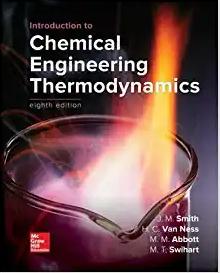Answered step by step
Verified Expert Solution
Question
1 Approved Answer
Project 2 : FUG Method and HYSYS Simulation Problem Statement Please design a de - ethanizer to perform the separation illustrated in Figure 1 .
Project : FUG Method and HYSYS Simulation
Problem Statement
Please design a deethanizer to perform the separation illustrated in Figure The five species in the feed with corresponding flow rates are methane kmo etharte kmo propane :kmo nbutane :kmo and npentaneane kmo Use propane as the reference. The average relative volatilities of nC relative to are, respectively, The desirable flow rate of in the distillate is kmo The expected flow of in the bottom is kmo The feed is saturated vapor. Complete the design of this column where design variables include the total number of actual stages, the compositions of distillate and bottoms, the optimum feed plate location, and the reflux ratio.
Figure Light Ends Deethanizer
Tasks to be Completed and Presented in the Report
Task With the given information in problem statement, a identify the light key LK heavy key HK light non key LNK and heavy non key HNK; b compute the fraction recoveries FRs for the LK and HK
Items to be included in your report: Specify all the LK HK LNK and HNK; Show the calculation procedures and results for FRs of LK and HK in both distillate and bottom.
Task Use the Fenske equation to determine: a the minimum number equilibrium stages ; b the fractional recoveries for all nonkeys in the distillate and bottom.
Items to be included in your report: Calculation procedures and results for ; Calculation procedures and results for FRs of all nonkeys in both distillate and bottom.
Task Using the obtained FRs for species in distillate and bottom from Tasks show: a flow rates of each component in the distillate and bottom ; b minimum reflux ratio LD

Step by Step Solution
There are 3 Steps involved in it
Step: 1

Get Instant Access to Expert-Tailored Solutions
See step-by-step solutions with expert insights and AI powered tools for academic success
Step: 2

Step: 3

Ace Your Homework with AI
Get the answers you need in no time with our AI-driven, step-by-step assistance
Get Started


